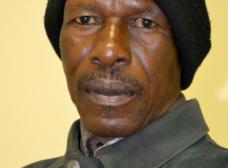Community upset over Medupi graves
Media reports indicating that the Medupi power plant has possibly been built on graves belonging to 14 families in Limpopo have sparked fears of more delays as family members accuse Eskom of not consulting them before the project started.
Northern News spoke to Lazarus Seodisa, a traditional healer in the Lephalale community, who is spearheading a quest to find the remains of those, who he says, were buried at the site. “All we want is to know what they did with the bones.”
Seodisa believes that a great tragedy has befallen the Lephalale community because graves have been moved and bodies exhumed without the proper rituals. “Our children are sick and TB is spreading because our ancestor’s bones are dug up without being told where they will go.”
According to Seodisa, the family needs to be present when the remains are moved in order to guide the ancestor to its new resting place. “In our tradition we talk to our ancestors and tell them they are now to be moved to a new place,” he says. “It is important that the family has access to this new site.”
“We have requested Eskom not to move the bodies far from the original site. You cannot exhume a body in Steenbokpan and then bury it in Marapong. We want a heritage site on the Medupi premises where our ancestors will be honoured.” According to Seodisa, who has consulted with the families since the project started in 2007, at least 20 graves still remain on the building site.
Northern News contacted Eskom to find out if the families have a right to be angry:
NN: Were the site inspected for graves before the Medupi building project started?
Eskom: In May 2006 we submitted an environmental impact assessment “EIA” to the authorities for approval and we were granted Environmental Authorisation (EA) in September 2006. One of the conditions that must be met during this process is to demonstrate compliance with the National Heritage Resources Act (Act 25 of 1999) “NHRA”. The independent EIA consultant approached the National Cultural History Museum to survey the area by conducting a Heritage Impact Assessment. The aim of this Phase 1 assessment was to locate, identify, evaluate and document sites, objects and structures of cultural importance found within the boundaries of the proposed sites that were to be impacted by the development. It was concluded that the nominated site of the farm Naauwontkomen 509LQ and Eenzaamheid 690LQ (the two properties on which Medupi and its ancillary infrastructure is currently being constructed) were ideal from a heritage perspective and that no further studies were deemed necessary as no sites discovered during the assessment would be impacted by the construction footprint. The South African Heritage Resources Agency supported this recommendation in its review of the study and found the final assessment conclusive from a heritage perspective.
NN: Were any graves found in the process?
Eskom: Known graves were located on farms surrounding Naauwontkomen 509 LQ and Eenzaamheid 690LQ (construction site), notably on the farm Kuipersbult 511LQ which is located to the south of the project footprint and on the farm Eenzaamheid 687LQ which is located to the west of the project footprint. While the farm Eenzaamheid 687LQ is privately-owned (the grave is protected), Eskom protects and maintains the two grave sites located on Kuipersbult 511LQ and has not restricted access to families who wish to visit. These graves are located away from Medupi infrastructure and will not be impacted on.
NN: Were the community consulted during this process?
Eskom: The outcomes of the EIA were shared and comments sought at public participation and focus group meetings held in various centres, including Lephalale, in line with legislative requirements. In addition to this, two separate public meetings were held in Marapong in June 2005 and March 2006, facilitated by the independent EIA consultant team and a local pastor to ensure translation. Minutes of both meetings held in Marapong indicate that no comments were made regarding heritage issues or the existence, or potential existence of graves.
NN: Were any graves found after construction started in 2007?
Eskom: Yes, on 6 June 2007 after the commencement of construction, an additional unmarked grave was located under a tree near the old school building. The area was cordoned off, construction halted and an archaeologist contacted as required. SAHRA was notified immediately. The grave was identified as that of Jaantjies Mokawe and his surviving family members; in this case, his mother was contacted. Further investigation did not reveal any other unmarked graves. Eskom contacted the previous owners of the property who confirmed that there are no other graves on the site.
Consent for the exhumation and the re-burial of the remains in a proper grave in Marapong was obtained from the mother. All costs were borne by Eskom and the holding of an appropriate prayer ceremony was allowed prior to the exhumation and again at the reburial to ensure local customary processes were met.
Seodisa is adamant that there was not enough consultation with family members. He showed Northern News a letter written by members of the community in June 2007 in which they request Eskom to give them time to find the families of those buried at the site. “Eskom was in a hurry to build and in the process asked the wrong people to move the remains.”
“These companies need to communicate more effectively with the families and give them access to the graves and leave the dead where they are.”













0 Comments